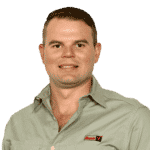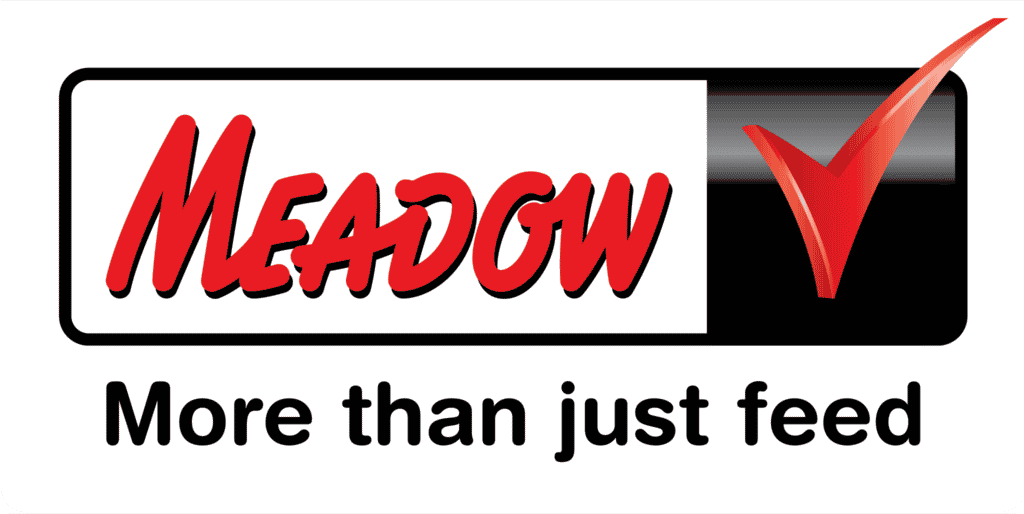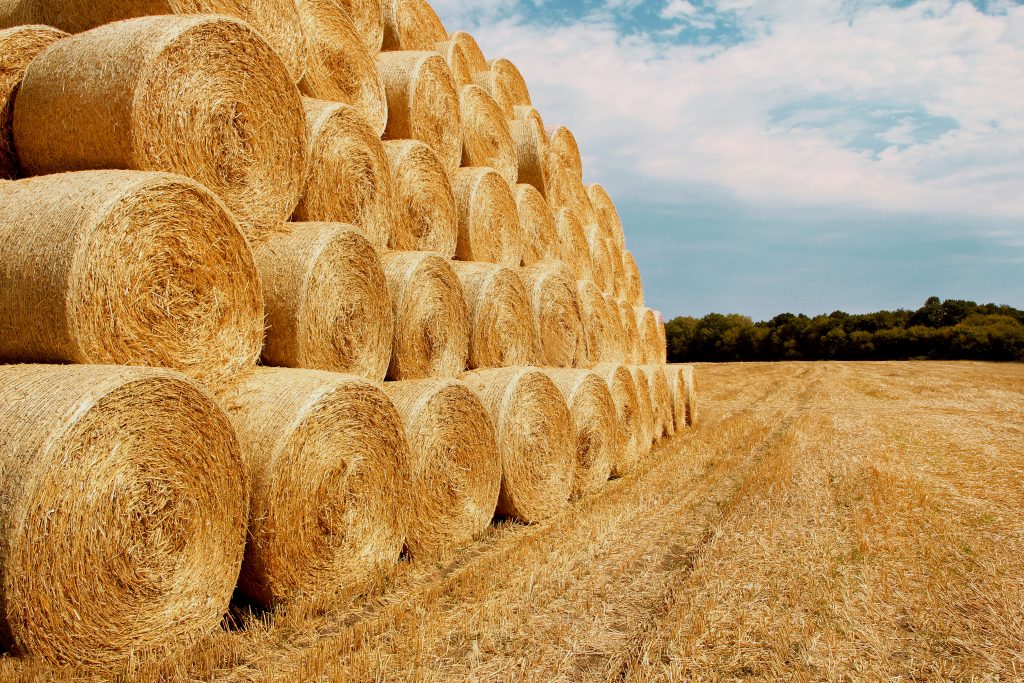There are many different views on the right time to cut forage for baling or ensiling. One option is to cut the forage when the quality is at its best (i.e. when it is past the optimal grazing level). The other option is to delay cutting to produce more quantity, which means compromising on the quality of the forage. The answer is not simple, and it may depend on the location of the farm, pasture availability, type of cow, and nutritional composition of the forage.
The more is less principle
A non-negotiable principle when it comes to cutting and preserving forage is that ‘more is less’, no matter how you approach the subject. If you are going for more quality, you will cut less. If you allow more growth to gain quantity, you will end up with less quality. The reason is that as a plant matures it requires more mechanical strength to stay erect as it grows taller and heavier. The plant loses moisture and produces more structural components such as hemicellulose, cellulose, lignin and silica, which form neutral detergent fibre (NDF) and acid detergent fibre (ADF).
As the amount of NDF and ADF in the plant increases, the protein and non-structural carbohydrates (easily fermentable energy sources) in the plant decrease. Inevitably, the plant material becomes more indigestible as the NDF and ADF levels have a higher resistance to chemical degradation, making the plant material inaccessible to enzymes that would normally digest it. In pasture systems, where forage makes up between 60% and 70% of the total dry matter intake of dairy cows, this has a negative impact on milk yield (shown in Table 1).
Table 1 Dietary comparison between forage of different quality
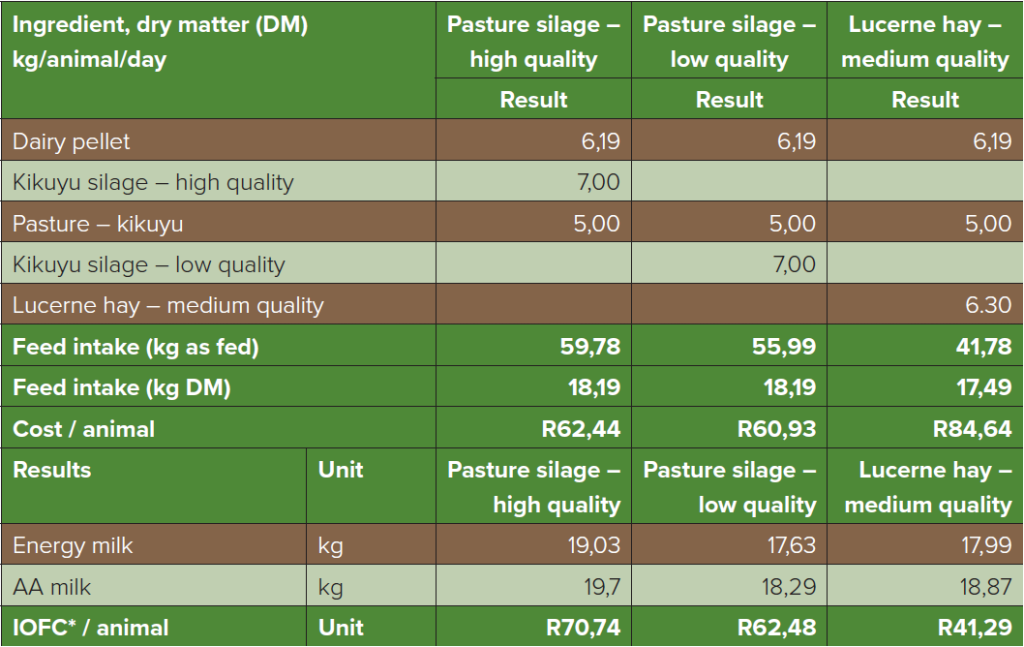
The financial figures presented in Table 2 show very little difference between the preservation of lower-yielding, high-quality forage and high-yielding, lower-quality forage. Higher quality home-grown forage results in higher milk production and increased profitability but also necessitates higher costs for procuring outside roughage for an extended period, which cancels out the benefit of higher milk yields. Keep in mind that these figures are relevant to this specific scenario.
Table 2 Income-over-feed cost figures on different forage quality rations
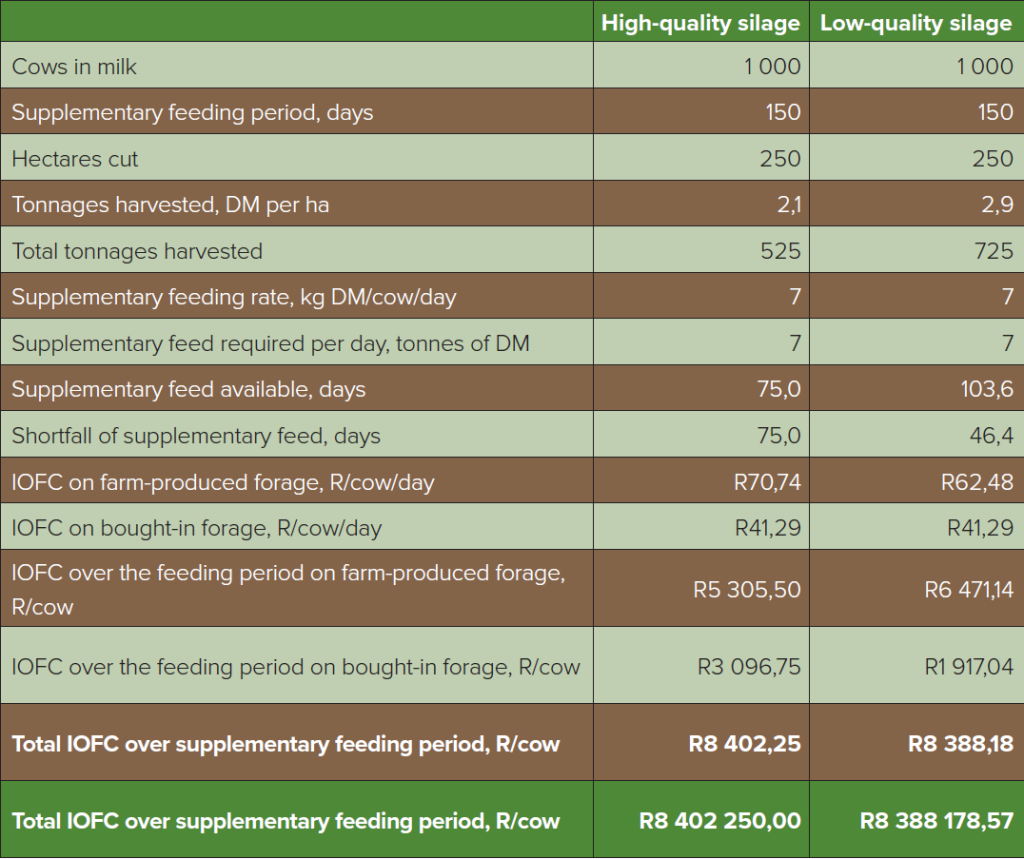
Each farm unique
Each farm is subject to a specific and unique set of circumstances that may justify a completely different approach from the one applied on a neighbouring farm. Farm location will affect the roughage options available to buy in. Transport costs to the farm, which are becoming a bigger cost factor, will affect the practicality of procuring outside roughage.
The days in milk of the herd will affect the milk production response to roughage quality. If the herd is late in milk, then a lower quality roughage will be adequate to maintain the production and body condition of the cows. The climate in the area is another important factor that will influence the optimum time to cut forage, and so the list goes on.
It is advisable to work closely with your nutritionist when making decisions on the most profitable strategy for running your herd. Never compromise on roughage quality and manage the cutting and baling or ensiling meticulously to achieve the best possible quality in your home-grown forage. Adequate amounts of high-quality roughage will reduce the production costs of milk. However, when financial or environmental conditions allow, a small shift in focus towards a higher yield may be wise – a cow with a properly filled rumen is happier than a cow with a half-filled one.
